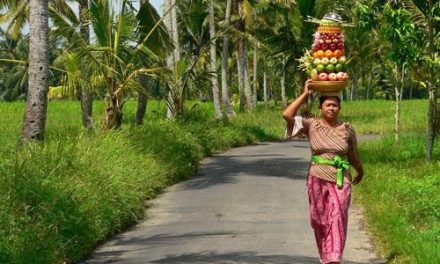Ubud, the cultural heart of Bali, is not just a feast for the eyes with its lush terraced rice fields and vibrant art scene; it’s also a treasure trove of cultural experiences, particularly through its traditional dance festivals. If you’re a traveler or a local looking to immerse yourself in Balinese culture, you absolutely must mark these festivals on your calendar. Let’s delve into the year-round celebrations, share some personal anecdotes, and uncover the magic of Ubud’s traditional dances.
A Cultural Tapestry
Bali is famous for its rich cultural heritage, and nowhere is this more evident than in Ubud. The traditional dances are not just performances; they are living expressions of the Balinese way of life, spirituality, and history. Each dance tells a story, often drawing from Hindu epics like the Ramayana and Mahabharata, with movements that convey deep emotions and themes.
January – The Bali Arts Festival
Though it’s primarily celebrated in Denpasar, the *Bali Arts Festival* in June often has smaller satellite events in Ubud. I remember the first time I stumbled upon a local performance while exploring Ubud’s streets during a quiet January afternoon. The smell of incense wafting through the air drew me in, leading me to an open stage where dancers adorned in vibrant costumes were rehearsing.
Tip: Always be on the lookout for spontaneous performances, especially during this planning time for larger festivals as local communities often showcase their talents in preparation.
March – The Nyepi Day Celebrations
March is special as it marks Nyepi or the Day of Silence. While it’s a quieter time for performances, the days leading up to it are filled with vibrant processions and traditional dances, particularly the *Ogoh-Ogoh* parades. These are massive, colorful effigies that symbolize the evil spirits of the previous year and are paraded around to be burned at sunset.
I vividly recall watching the young children in the village dance in uniforms made from brightly colored fabrics, their eyes wide with excitement. It was a beautiful reminder of how dance is woven into their everyday lives and important celebrations.
Advice: If you’re there during Nyepi, take time to appreciate the days leading up to it, as it’s an immersive experience. Just make sure to plan ahead for the quietness of Nyepi itself, where even tourists are encouraged to stay indoors.
June – Ubud Writers & Readers Festival
The Ubud Writers & Readers Festival usually takes place in October, but leading up to it, you’ll find various performances, workshops, and discussions that blend literature and dance. In June, there’s often an excitement in the air, with small dance groups practicing their routines in the park adjacent to the Ubud Palace.
I recall joining a workshop one year, trying my hand at learning a few basic steps of the *Legong* dance. The energy in the room was electric as we laughed at each other’s clumsiness and celebrated the joy of learning something so culturally significant.
Tip: Check the festival’s schedule. Oftentimes, they include traditional dance performances that are open to the public. Don’t hesitate to participate in a workshop if they offer it!
October – Ubud Village Jazz Festival
While primarily focused on jazz, the Ubud Village Jazz Festival in October often incorporates traditional dance performances, showcasing the blending of cultures. One evening, as the stars twinkled overhead, I sat on a blanket with friends sipping coconut water, feeling the rhythm of the music blend with the elegance of Balinese dancers twirling gracefully under the moonlight.
It’s an example of how Ubud celebrates cultural crossover, creating an inclusive space for different genres to intermingle while still honoring traditional roots.
Recommendation: Bring along a picnic blanket and a good-sized cushion. The atmosphere is laid back, and sharing good food with friends or fellow travelers under the stars can enhance your experience.
December – The Galungan Festival
Celebrated every 210 days, Galungan is a very significant holiday in Bali where the forces of good triumph over evil. The week-long festival features rituals, offerings, and, of course, mesmerizing dance performances.
I remember visiting a temple during Galungan and being swept away by the *Barong* dance, where the dancers illustrated the eternal battle between good and evil. The sound of the traditional gamelan music filled the air, resonating deeply within me. It reminded me how much history and spirituality define these performances.
Tip: Take the time to actively engage with locals during Galungan. Ask questions about the dances, and you might just make a friend who offers additional insights into their significance.
Wrapping Up
Ubud’s traditional dance festivals throughout the year are not just events on a calendar; they are experiences that invite you into the heart of Balinese culture. Whether it’s catching a spontaneous performance, participating in a vibrant procession, or simply being seated in awe of the talent around you, each event is a chance to connect deeply with Ubud’s rich heritage.So, pack your bags and plan your visit around these festivals. You just might find yourself not only an observer but a participant, laughing, dancing, and celebrating the beauty of Ubud’s traditions. After all, who knows? You might just end up onstage yourself, twirling alongside a group of dancers, creating memories that will last a lifetime.






